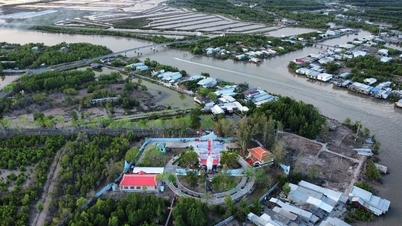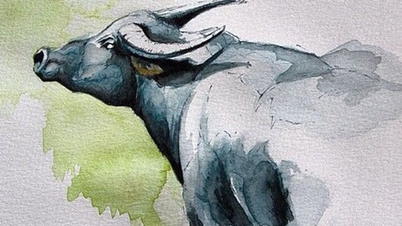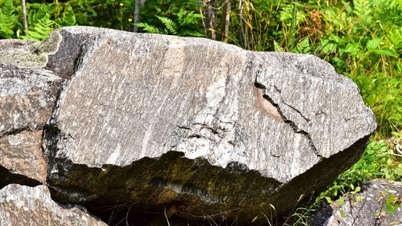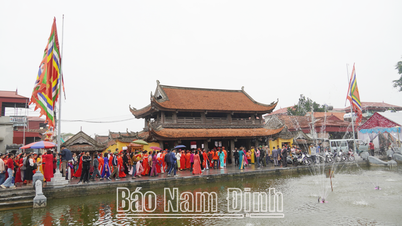Chinese archaeologists have discovered nine sections of the Great Wall, believed to be more than 2,000 years old, in Gansu Province, northwestern China.
These sections of the wall were found in Jingyuan County, Baiyin City. Based on characteristics such as the thickness of the rammed earth layers, archaeologists initially concluded that these sections of the wall were built during the Qin Dynasty (221 BC - 207 BC).
Among the discovered sections is the Yingu Great Wall. Du Baoze of the Jingyuan Cultural Relics Conservation Office said the yellow soil color of the rammed earth layers on the east and west sides of this section of the wall is different, indicating that they were built at different times.
The remaining eastern section of the wall looks like a mound, 5.2 meters high, 4.5 meters wide and 11 meters long. By comparing with the watchtowers built during the Ming Dynasty (1368-1644), archaeologists believe that the section of the wall has the characteristics of the Qin Dynasty Great Wall, while the western section appears to have been renovated during the Ming Dynasty.
The Yushugou, Longhuangshui, and Huangtianqi Great Wall sections share a common stone wall structure, suggesting that they were built at the same time. Most stone walls were built in strategically important areas, often between gorges or on terrain with natural defensive advantages.
This is consistent with the distinctive feature of the Qin Dynasty Great Wall, which was designed to follow the terrain, allowing builders to take advantage of natural defensive advantages while minimizing construction effort.
The discovery was made during the fourth national cultural heritage survey, which was launched in 2023 and will last until 2026. It is China's first national cultural heritage survey in more than a decade.
According to Mr. Zhang Hongwei, a guide of the archaeological survey team in Jingyuan and a local researcher, sections of the Great Wall from different periods in Chinese history serve as a museum.
"Studying the Great Wall relics is very important to understand the historical characteristics of those periods, the relationships between different ethnic groups and the geography of ancient China," he said.
The Great Wall, a World Heritage Site recognized by the United Nations Educational, Scientific and Cultural Organization (UNESCO), consists of several interconnected walls, some of which date back more than 2,000 years.
The oldest sections of the Great Wall were built during the reign of the first emperor of the Qin Dynasty with the aim of building a defense system against northern tribes./.
Source: https://www.vietnamplus.vn/phat-hien-cac-doan-van-ly-truong-thanh-2000-nam-tuoi-o-tay-bac-trung-quoc-post1035876.vnp


![[Photo] Performance of the Air Force Squadron at the 50th Anniversary of the Liberation of the South and National Reunification Day](https://vphoto.vietnam.vn/thumb/1200x675/vietnam/resource/IMAGE/2025/4/30/cb781ed625fc4774bb82982d31bead1e)



![[Photo] Chinese, Lao, and Cambodian troops participate in the parade to celebrate the 50th anniversary of the Liberation of the South and National Reunification Day](https://vphoto.vietnam.vn/thumb/1200x675/vietnam/resource/IMAGE/2025/4/30/30d2204b414549cfb5dc784544a72dee)
![[Photo] Cultural, sports and media bloc at the 50th Anniversary of Southern Liberation and National Reunification Day](https://vphoto.vietnam.vn/thumb/1200x675/vietnam/resource/IMAGE/2025/4/30/8a22f876e8d24890be2ae3d88c9b201c)
![[Video] Vietnamese start-up AI wins at Asia's leading technology event](https://vphoto.vietnam.vn/thumb/402x226/vietnam/resource/IMAGE/2025/4/30/76eba0f013514accaa77f310813e49ce)



















































































Comment (0)